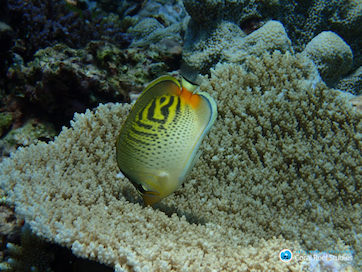Coral bleaching causes behavioral changes in butterflyfish
An international research team led by Sally Keith, who was an associate professor at the DNRF’s Center for Macroecology, Evolution, and Climate (CMEC) from 2013 to 2017, has found that behavioral changes in iconic butterflyfish are caused by coral bleaching. The research work started when Keith was part of CMEC, and the study has now been published in the journal Nature Climate Change.

Previously an associate professor at the basic research center CMEC, Sally Keith has led a new study that shows how behavioral changes in butterflyfish are caused by bleaching of the coral reefs in the oceans. The bleaching has increased during the last couple of years as a result of rising sea temperatures, and the study’s result may be a warning that the world’s coral fish are in danger. The work was initiated while Professor Keith was working at CMEC, and the study has just been published in the scientific journal Nature Climate Change.
When coral reefs are exposed to extreme stress from the surrounding environment, such as increased sea temperatures, coral bleaching occurs. That is when the colorful corals blister and, in the worst case, die. The reason behind this is that healthy corals live in symbiosis with algae, which produce pigment and thereby color the corals, but rising sea temperatures are stressing the symbiosis and making the algae leave the coral reefs. The iconic butterflyfish lives off the reef’s algae and is considered an important indicator of the condition of the coral reefs.
In the project, Professor Keith and the rest of the international research team studied the butterflyfish for two years and spent more than 600 hours undersea where the researchers have observed the behavior of the fish. During this period, the research team gathered data from a total of 5.259 observations spread among 38 different types of butterflyfish. The results showed that some of the fish exhibited a significant change in behavior.
“We observed that aggressive behavior had decreased in butterflyfish by an average of two thirds, with the biggest drops observed on reefs where bleaching had killed off the most coral,” said Dr. Keith. “We think this is because the most nutritious coral was also the most susceptible to bleaching, so the fish moved from a well-rounded diet to the equivalent of eating only lettuce leaves — it was only enough to survive rather than to thrive.”
The study proves how animals can adapt in the short term to catastrophes but not in the long term. Also, the result may explain the mechanism behind population declines in similar ecosystems that likewise are threatened by environmental disturbances.
Read the scientific article at Nature Climate Change here.
More information about the study can be found at Lancaster University here.
